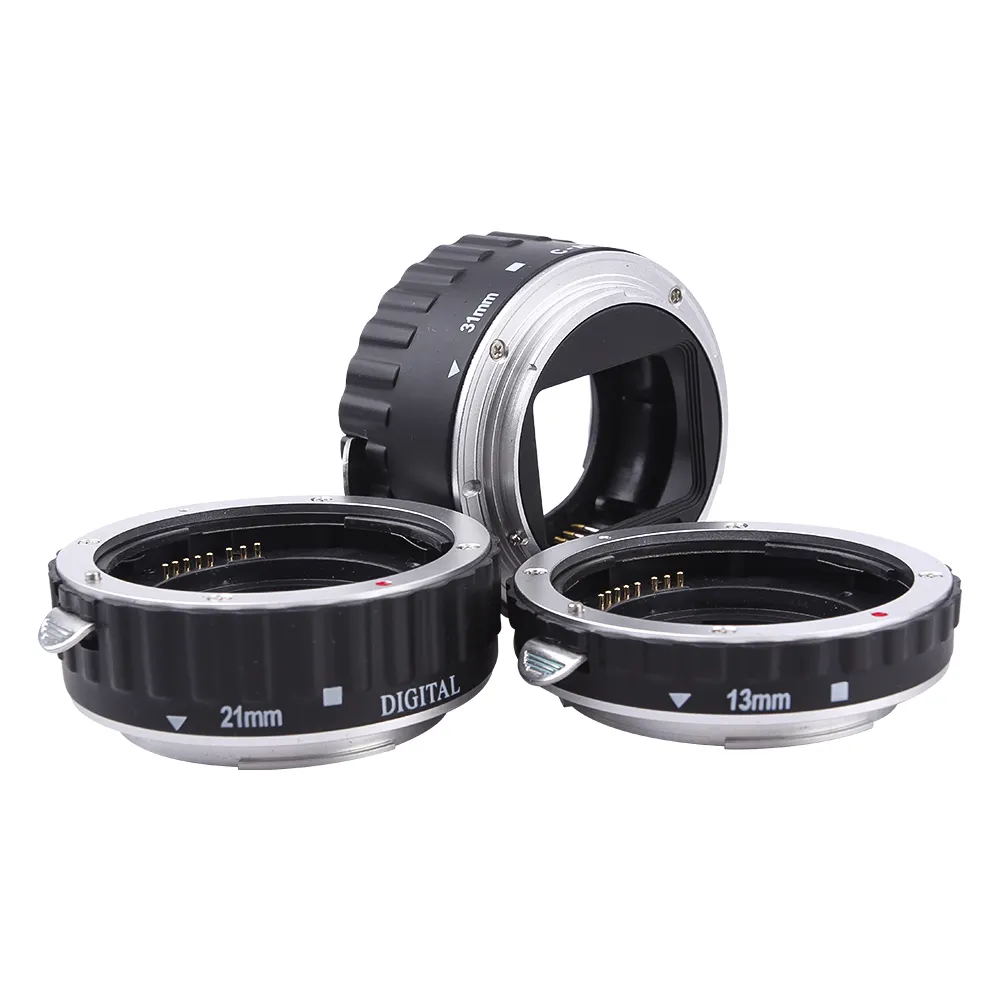

Time:2025-05-06 Views:1

Macro rings, such as extension tubes and reversing rings, can be paired with a variety of lenses to achieve macro photography effects, but the compatibility and resulting performance vary depending on the type of lens.
Extension tubes are commonly used with a wide range of lenses, including prime lenses and zoom lenses. Prime lenses, which have a fixed focal length, often work well with extension tubes. Lenses with a moderate focal length, such as 50mm or 85mm prime lenses, can be a great choice. When combined with extension tubes, they can achieve significant magnification, allowing for detailed close - up shots. For example, a 50mm prime lens with a set of extension tubes can be transformed into a functional macro lens, enabling photographers to capture small subjects like flowers or insects with high clarity. The relatively simple optical design of prime lenses also means that they tend to maintain good image quality even when used with extension tubes.
Zoom lenses can also be used with extension tubes, although the results may be more variable. Wide - angle zoom lenses, like those with a focal length range of 16 - 35mm, may not be the best candidates for extreme macro photography with extension tubes, as they typically have a limited focusing range and may not achieve very high magnification. However, mid - range and telephoto zoom lenses, such as 24 - 70mm or 70 - 200mm, can offer more flexibility. With the right combination of extension tube lengths and focal length settings, they can be used to capture macro - like images from a greater working distance, which can be advantageous when photographing subjects that are difficult to approach closely.
Reversing rings are usually compatible with prime lenses that have a filter thread. The filter thread is used to attach the reversing ring, which then allows the lens to be mounted backward on the camera. Lenses with a larger maximum aperture, such as f/1.8 or f/2.8 prime lenses, tend to work well with reversing rings. When reversed, these lenses can achieve extremely high magnification ratios, often resulting in unique and highly detailed macro images. However, using a reversing ring requires manual focusing and exposure control, as the lens's normal electronic connections to the camera are disrupted.
It's important to note that when using macro rings with any lens, there may be some impact on image quality. The additional distance created by extension tubes or the reversed orientation with a reversing ring can affect factors such as light transmission, depth of field, and sharpness. Additionally, autofocus functionality may be lost or severely limited, requiring photographers to rely on manual focusing techniques. Therefore, while many lenses can be used with macro rings, it's essential to consider these potential drawbacks and choose lenses that are best suited for the desired macro photography style and results.
Read recommendations:
Universal NATO Side Handle Quick Release Aluminum Handgrip for DLSR Camera Cage Kit